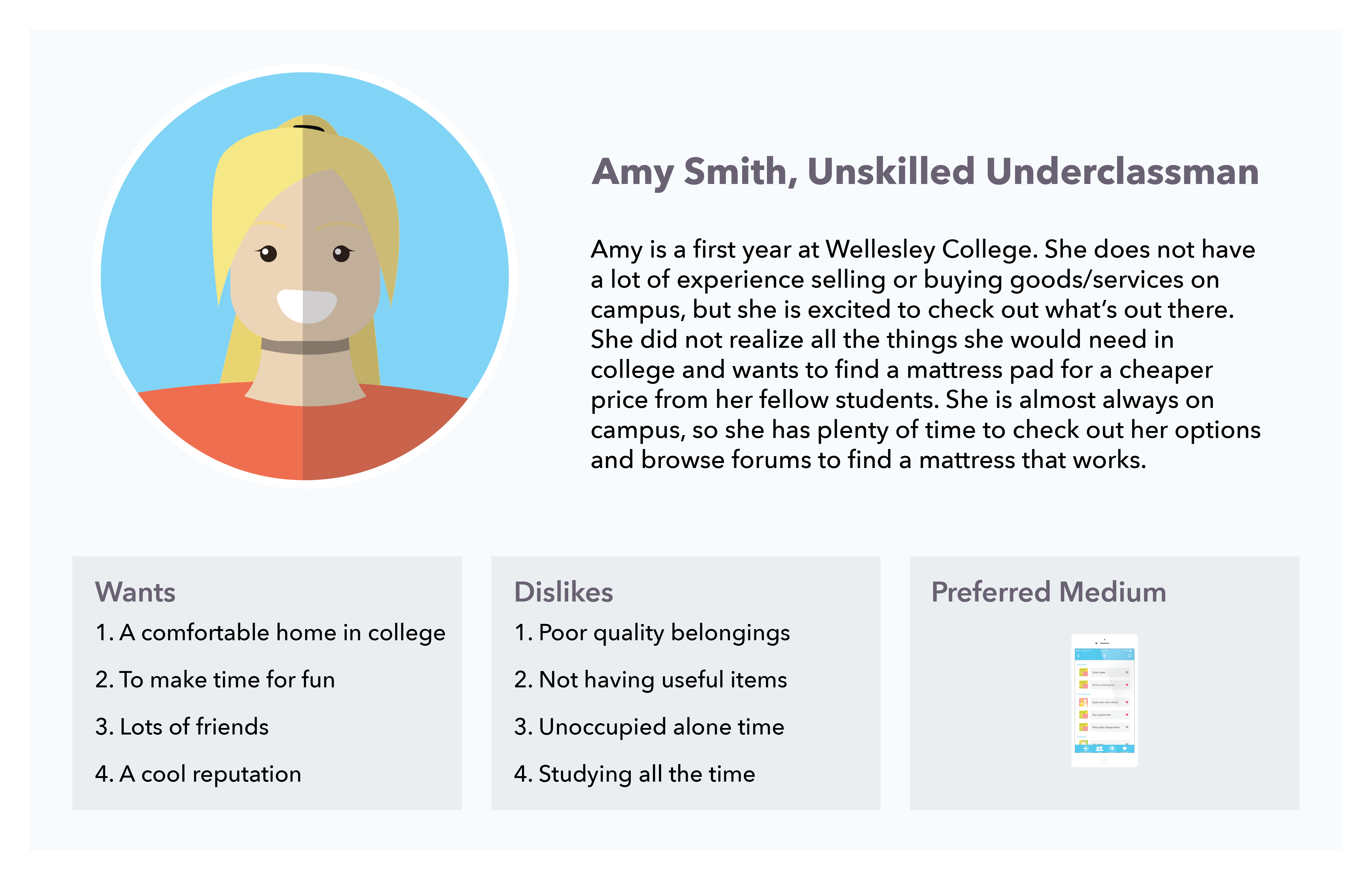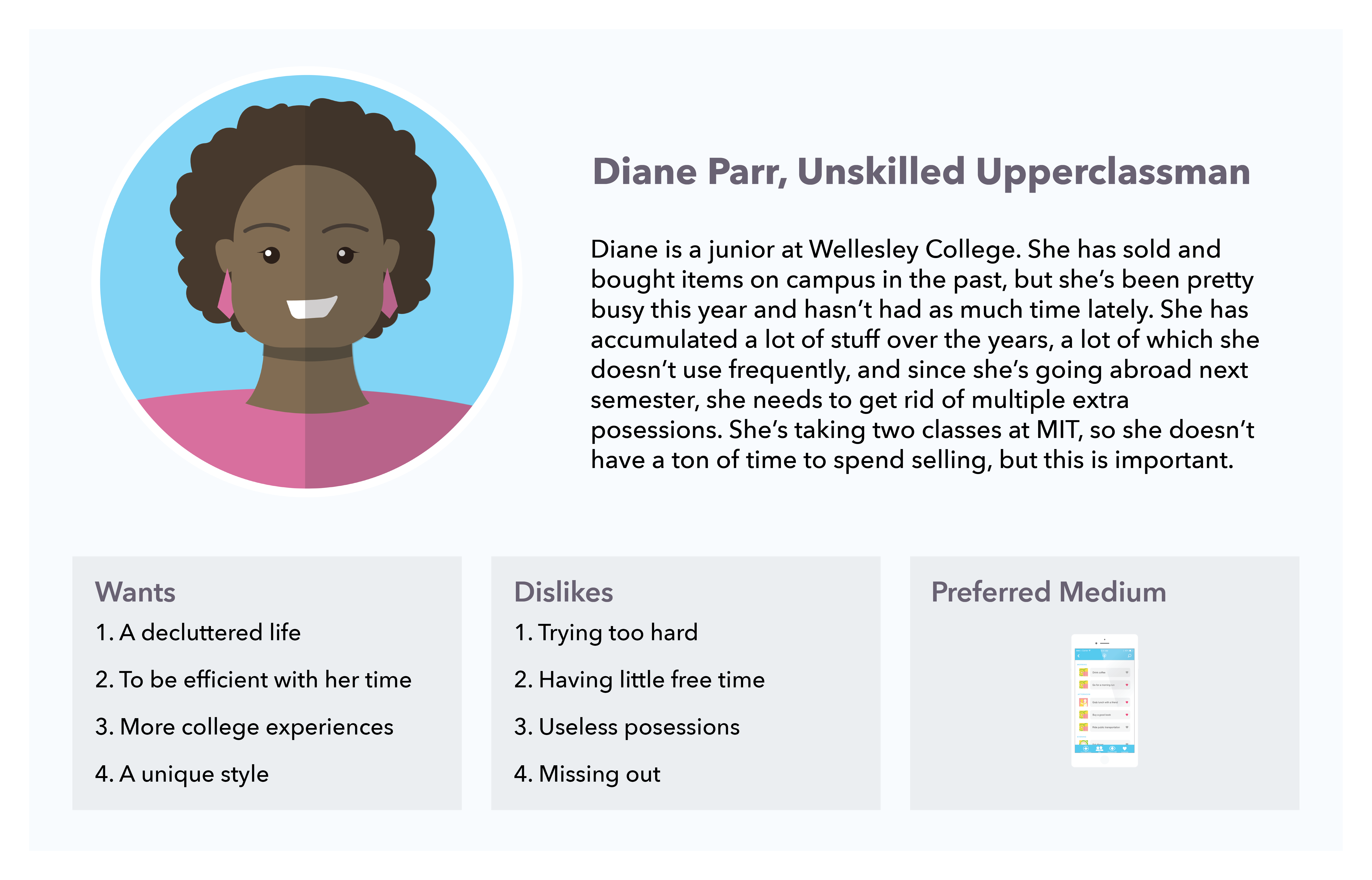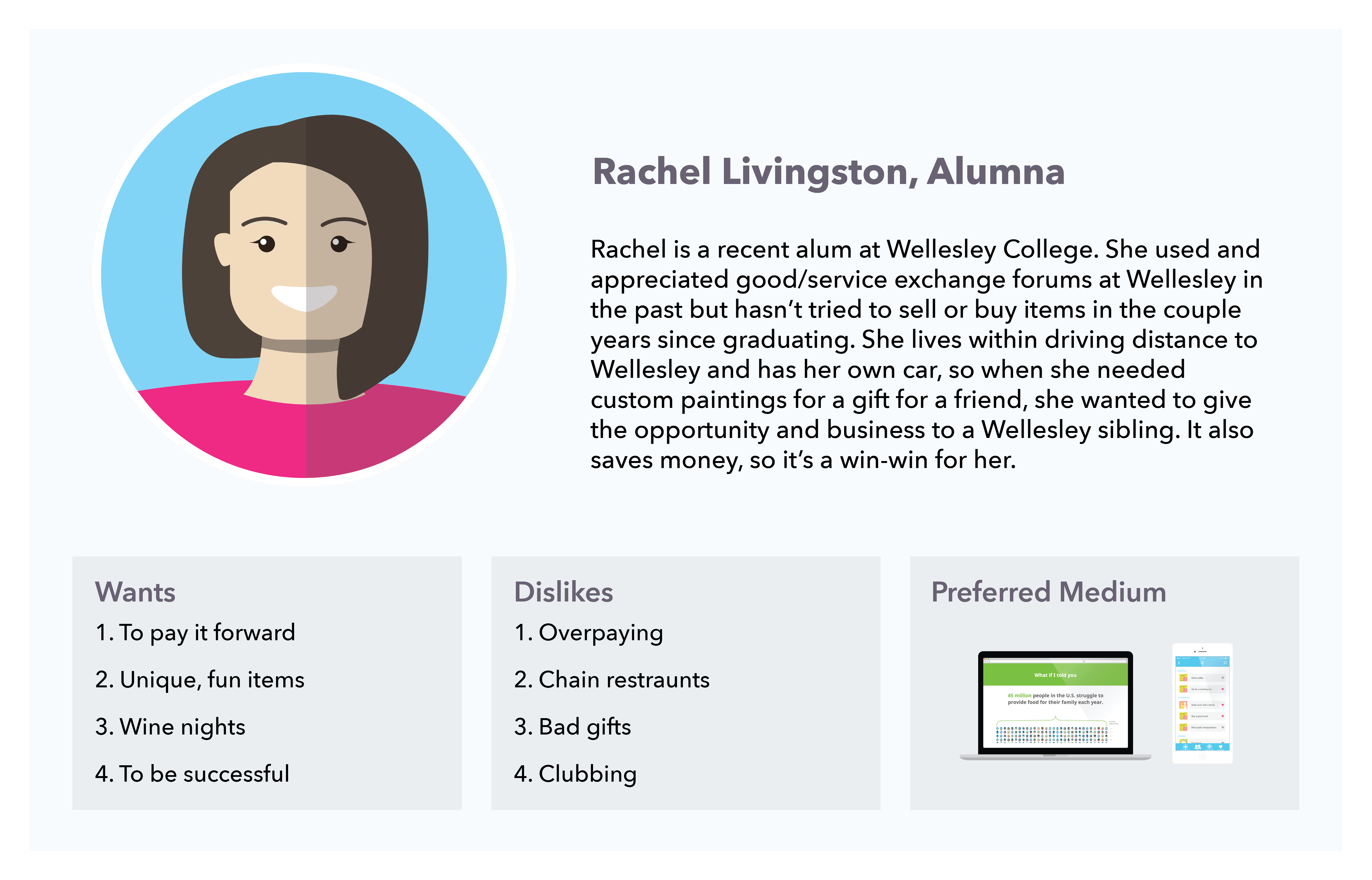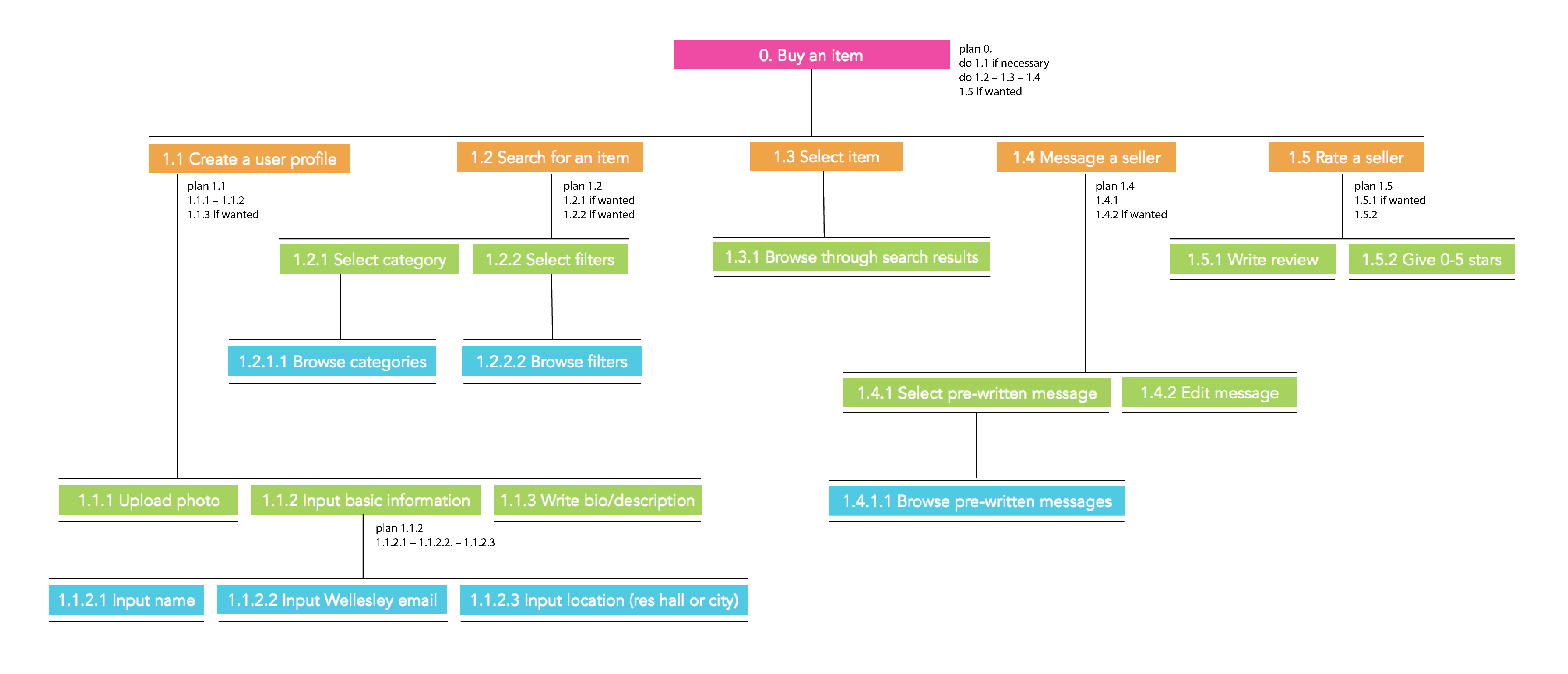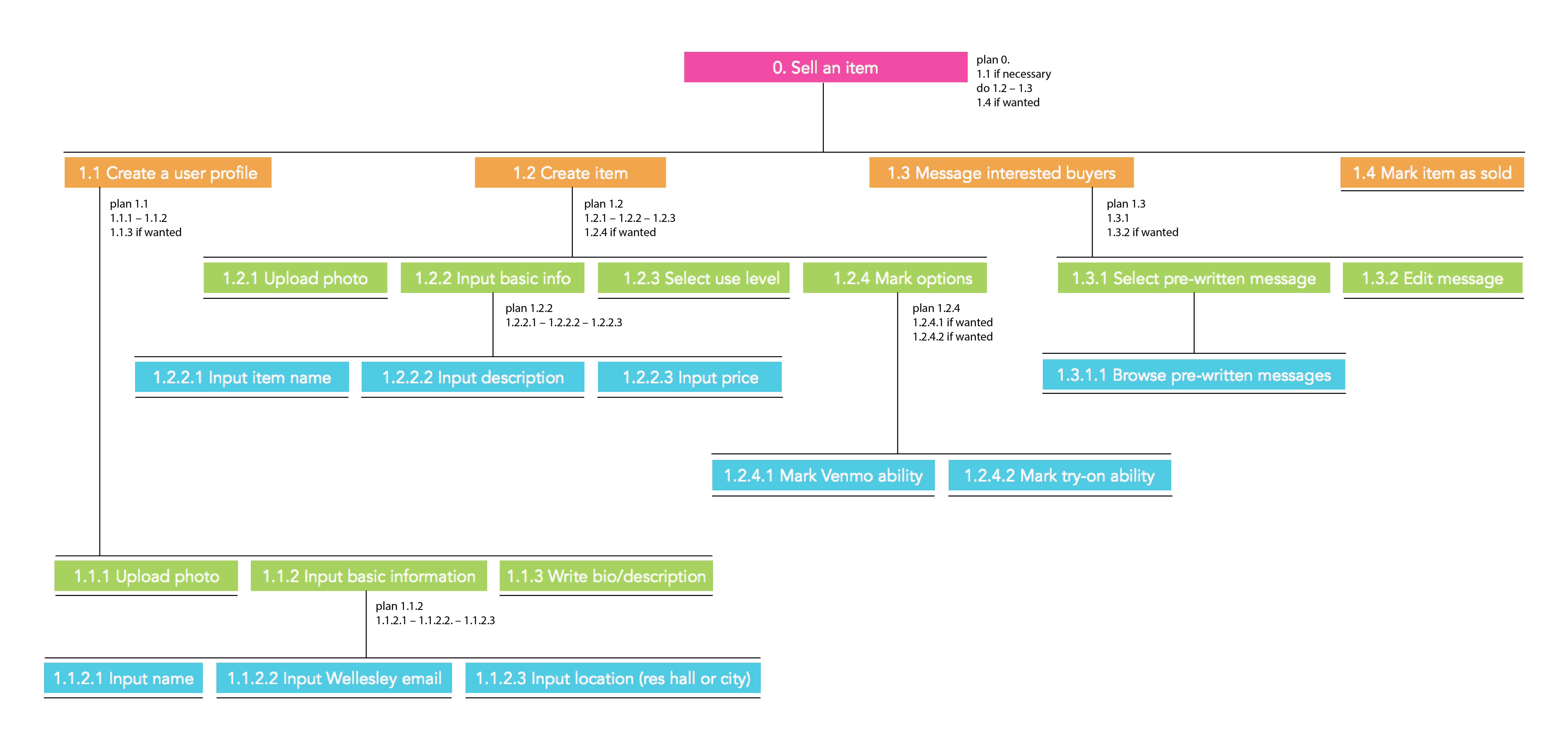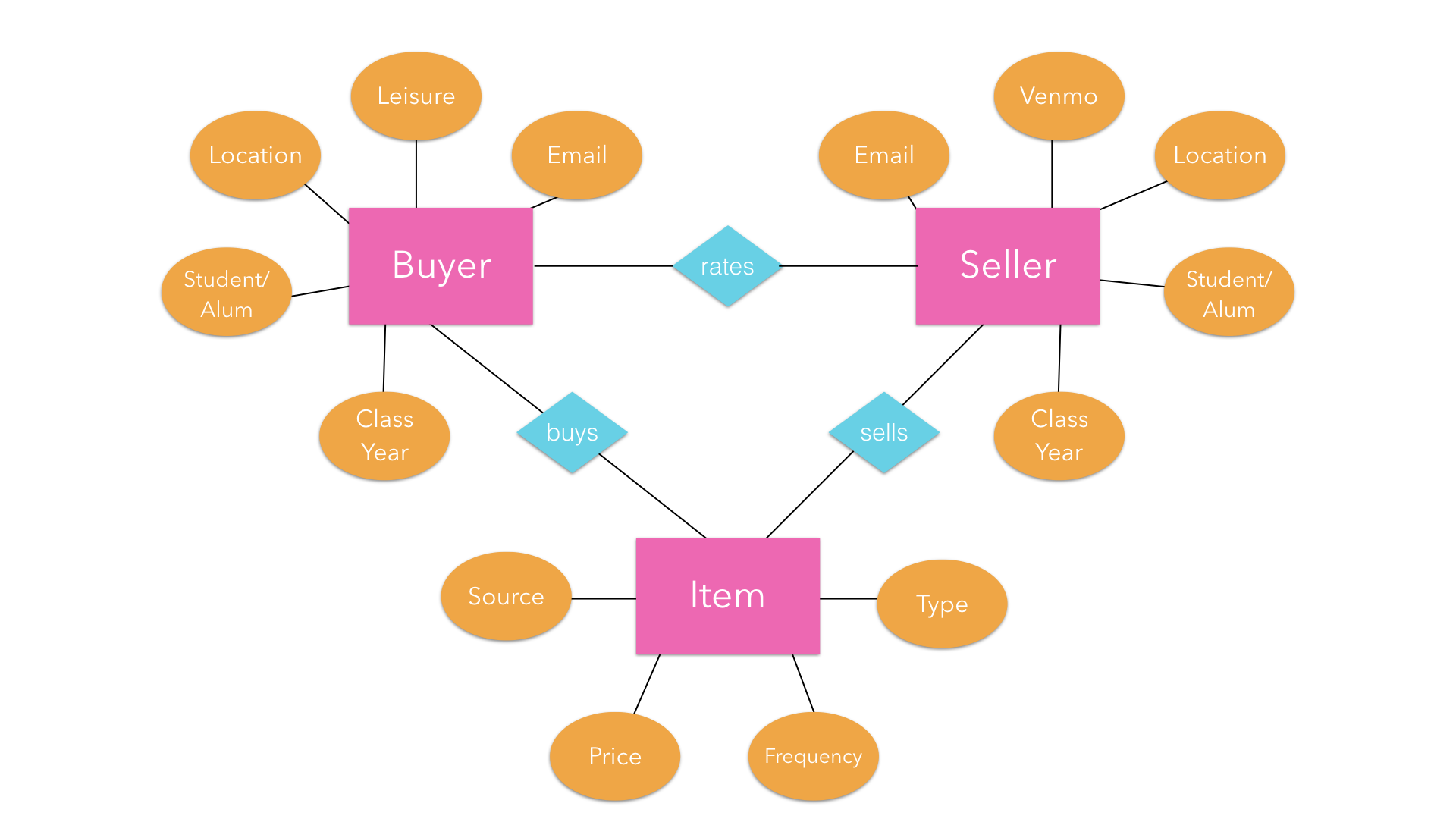

Wellesley students throw away countless clothes and household goods every year because they are not able to find someone who could reuse the items. This waste presents a huge problem for sustainability on our campus and an opportunity to decrease wasteful behavior and increase the life and utility of these goods.
Through observing and talking to potential users we found that there were variations in need pertaining to the various groups within the Wellesley community. For example, freshmen were found to be on Free and For Sale more often, not necessarily for urgent needs but to browse for fun during breaks in between schoolwork. On the other hand, juniors and seniors tended to be more on the selling side, with many items to sell prior to studying abroad or graduation. Many international students also stated that they had a lot of extraneous things that they had to get rid of because it was too hard to bring all items back home in two luggage bags; they ended up throwing most of these items away because the influx of people selling at the end of the semesters made it hard for anyone to complete transactions. A commonality that all users experienced was the lack of organization on the current site for all commerce needs; most of them did not even care to look because it was too much of a “headache” to look through. Many users also mentioned that due to the disorganization most sale posts get lost in all the junk of people looking for things. When users posted at midday, they received less views than if they posted at night when many students are online.
Note: in this project, “unskilled” refers to students who do not have a craft, artistic, or other ongoing skill that they use to provide goods and services to others. “Skilled” refers to students who do have a craft, artistic, or other ongoing skill that they use to provide goods and services to others.
Our first three user classes consist of Wellesley College students (young adults ages approx. 18-22 but also including Davis Scholars with a range of ages). As college students, they have busy lifestyles and a tight budget. They are familiar with technology, and most carry around their own laptops and smartphones. These students include freshmen, sophomores, juniors, seniors, international students, and Davis Scholars.
Unskilled underclassmen (freshmen and sophomores) tend to be buyers. They are more likely to scroll through these sites for fun. They are also in need of more items, since they are less familiar with essential dorm living items. These underclassmen are less experienced selling and buying goods on campus, but are interested. They are typically on campus and in the dorm more frequently.
Unskilled upperclassmen (juniors and seniors) tend to be sellers as they are more familiar with essential dorm living items and often have to get rid of stuff for study abroad or graduation. They tend to sell multiple items at once, and they have less time to scroll through these sites and are more strategic with their use. They are typically busier and on campus less frequently.
Within our student body, there are students of all ages and origins that have a craft, artistic, or other ongoing skill that they use to provide goods and services to others. On Free & For Sale, these skilled students market goods and services as artists, photographers, eyebrow threaders, masseuses, seamstresses, etc. While, as a class, they may have some overlap with unskilled upperclassmen and underclassmen, they are also differentiated in how they act as sellers. For example, they are more likely to sell goods/services on a frequent, ongoing basis. They care more about their posts on Free & For Sale and really try to sell themselves, putting more effort and time into the site. Page disorganization particularly affects them since they want their posts to be seen and remembered over long periods of time.
International students fall into these classes. However, it is important to note that international students also have unique use of these sites because they often have strict packing space guidelines for international flights. They must sell a lot of stuff to make room in their luggage when leaving campus and often buy a good amount of stuff when they return.
Davis Scholars also have some overlap with these classes. However, as a whole, Davis Scholars use these sites less frequently and are less likely to spend their time sorting through their disorganized feeds.
While this group has a broader age range, they are typically young adults/recent grads as well, under the age of 35. They live in close vicinity to the college (the Greater Boston Area), and they likely have their own transportation. They have more flexible budgets than students do and care about supporting the community by doing business among Wellesley students/alumnae when opportunity arises. However, they also spend significantly less time on Free & For Sale than students. They go to the page when a particular need arises. The items they sell tend to be more expensive and may be targeting other alums. They are typically unskilled.
